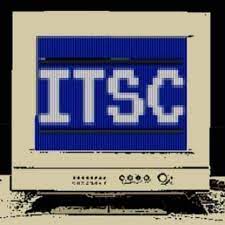Private equity sits on top of $2.51 trillion in dry powder globally, yet firms still struggle to deploy capital fast enough. What once looked like an execution challenge has become a structural crisis: speed is now the defining constraint. If you’re operating
at yesterday’s pace, you’re already behind.
Three years ago, partners weren’t pressed by the same competitive forces. They could rely on traditional processes and armies of analysts. Now, the environment has shifted dramatically. Private equity is colliding with venture capital in many deals, competing
not just on capital but on velocity, with multiple term sheets often hitting the same company at once. Against this backdrop, traditional models feel increasingly archaic.
The Capacity Crunch
Funds traditionally reviewed 10-15% of deals they saw. Now, to deploy more capital, they need to expand to 20-25% of opportunities. Most can’t scale their teams proportionally.
So they make hard choices. Focus on two deals and forget the other eight without having the time to go deeper in them, in spite of interest. Meanwhile, selectivity rates are tightening from 5% to 2-3%, given the volatility of funding and valuations from
years 2020-2024. To maintain deal execution volume, you need to review more opportunities with the same resources.
After the 2022-2023 market downturn, when markets were volatile and deal flow slowed, this pressure intensified. Megafunds like Blackstone, KKR and many others are now moving downstream into middle market and low mid-market deals they rarely touched before.
When you need to put money to work, you go where the deals are.
The goal becomes getting to no faster with more conviction and saying yes with confidence.
The Real Constraint Isn’t Capital
LPs don’t accept excuses for slow deployment. Every day, deal teams face mounting pressure: more deal flow, denser and more complex data rooms, and shorter deadlines. They must extract signal from noise and enter investment committee discussions with conviction.
Meanwhile, portfolio company data has exploded. Modern ERP systems and digital tracking produce line-item detail at unprecedented scale. Standard analysis no longer suffices when the questions shaping valuation hinge on retention curves, price-volume dynamics,
cohort behaviors, and cost structure shifts.
Speed Wins Deals
Speed is no longer a nice-to-have; it has become a strategy in its own right. In many cases, winning exclusivity comes down to who can move fastest, not who can pay the most. Large funds consistently outmaneuver mid-market peers by compressing diligence
cycles and securing deals before others finish their analysis. Technology has turned speed from an advantage into a baseline requirement.
Most firms can only diligence a fraction of the deals they see. That’s not a people problem, it’s a tooling problem. Without the right tools to move quickly and with conviction, great opportunities are missed and weak ones slip through.
Hedge Funds Got Their Algo Era. Now It’s PE’s Turn.
Artificial Intelligence is becoming the defining force in private equity, ushering in a transformation the industry hasn’t seen in decades. Large Language Models (LLMs) introduce levels of contextual reasoning, pattern recognition, and data synthesis that
were previously impossible. It’s reminiscent of the early 2000s in hedge funds, when computational horsepower birthed entire strategies like high-frequency and algorithmic trading, which today represent the majority of market volume. The difference for PE
is that this wave isn’t confined to back-office functions: everyone from associates to partners is now engaging directly with AI. From sourcing to diligence to portfolio value creation, the PE tech stack is being rebuilt with AI at the core.
Why Current AI Misses the Mark
Most AI for finance tools today focus on document summarization. They read a CIM and highlight paragraphs. Some generate bullet points. But summaries don’t drive investment decisions.
True diligence demands logic, math, and context. It requires calculating dollar-weighted retention curves, modeling SKU-level price-volume mix, and isolating cost-structure shifts that change the trajectory of a business.
What was nice-to-have just a year back has changed rapidly. Today, firms equipped with the right tools can uncover the true reality of a business—not through surface-level summaries, but through precise metrics derived from deep, complex data analysis and
nuanced data cuts. The gap is obvious: it’s like someone using a computer versus someone doing calculations on paper.
AI Works When It’s Targeted
Think of it like running a 10-mile race with a massive river in the middle. You don’t need bridges everywhere, just where you need to cross. AI is that bridge.
AI provides contextualization ability that wasn’t available before. But software engineering plus AI gets you from end to end, not AI by itself. You need AI to identify patterns and context, then deterministic processes to execute on that insight.
AI is about amplifying the ability for teams to think and work. Modeling how the sharpest investors think and giving tools to move faster than competitors. Raw deal files—CIMs, transaction databases, Excel models, financial statements, ERP exports, customer
cubes—need to become structured, investor-ready insights.
What This Means Practically
Even similar-sized funds face this pressure. Success comes down to how you can get to those differentiated insights in the least possible time
The industry has shifted. Technology adoption isn’t about gaining advantage—it’s about staying competitive. Speed, accuracy, and analytical capability are now minimum requirements, not differentiators.
From where I sit, the firms adapting fastest aren’t just gaining efficiency, they’re fundamentally changing how deals progress through their pipeline. They’re automating data ingestion and moving from first meeting to term sheet much quicker and with the
most conviction.
The constraint isn’t capital anymore. It’s speed, and it’s technology that ultimately results in conviction and smart decision-making. The tools that help teams create alpha and move from data to decision fastest will define who wins.
The question for every GP now is simple: Can your tech stack shave a week off diligence by Q4, or will the next fund pitch start with excuses?
The post Private Equity Has a Major Speed and Capacity Problem: By Rohan Parikh first appeared on TechToday.
This post originally appeared on TechToday.
